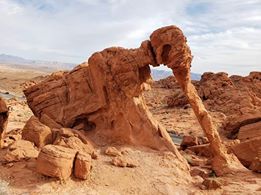Wendover Field was conceived during the late 1930s, and Congress appropriated funds in 1940 for the acquisition of land for bombing and gunnery ranges. Wendover was selected because of the Great Salt Lake desert with its shimmering salt flats and other vast uninhabited terrain.
In 1942 President Franklin D. Roosevelt had established the “Manhattan Engineer District” for the purpose of developing an atomic bomb. By 1944 development of the bomb was under way and the B-29 bomber was selected to deliver the weapon. General Henry “Hap” Arnold, Commander Army Air Forces, named Colonel Paul W. Tibbets, Jr. to head the select team. Only Tibbets knew the mission of the 509th Composite Group, and he chose Wendover Field, Utah, for training because of its isolation, the need for security, and the wide open spaces available for training.
Historic Wendover Airfield is dedicated to preserving World War II Army Air Force history, educating present and future generations about this period and having visitors experience the feelings and understand the circumstances of the WW II era participants.
The Airfield strives to maintain the maximum originality of the Wendover Air Base and re-create authentic exhibits and displays in order to stimulate a living connection between the visitor and the past.
The Airfield seeks to preserve, share and portray the sacrifice, unity, and ingenuity of the WW II participants through hands-on, interactive and interpretive exhibits and displays, and personal experiences told through multimedia exhibits.
Major Events include:
WWII Pilot Training Camp (Become an United States Army Air Force fighter pilot)
Historic Wendover Air Show
Pictures below are provided by contributors or supporters of this website. If you are interested in sharing your pictures of Nevada, please drop us a note.

Courtesy T. Turner – Wind sculptured rock